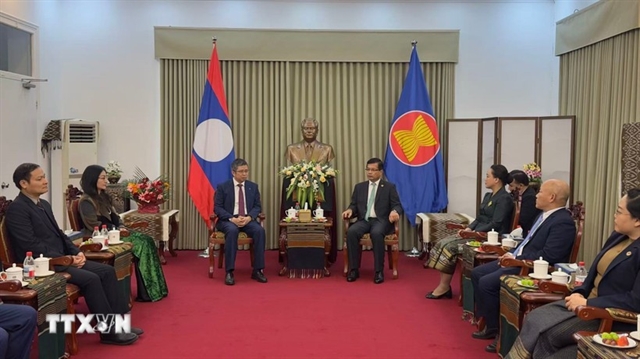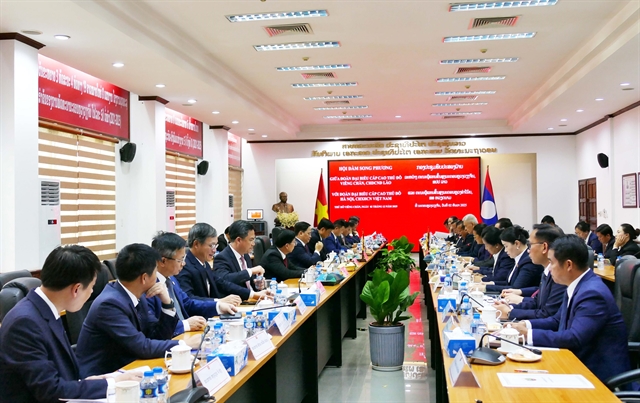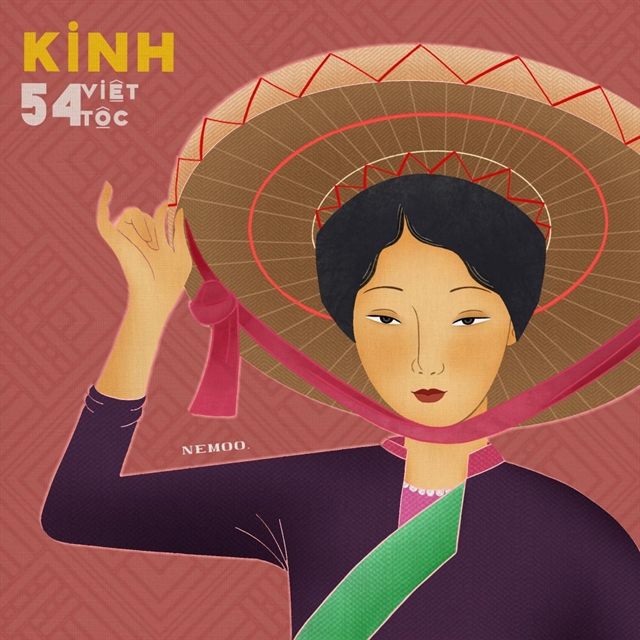 Features
Features
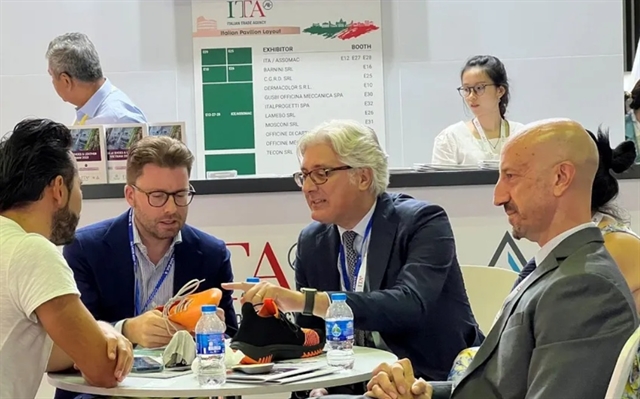
The practice of martial arts, an integral part of Vietnamese culture, is still being preserved and developed after centuries of existence. Ngọc Phương reports.
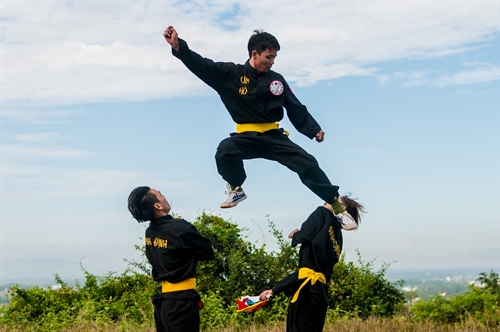 |
| Power pose: Martial artists engage in close combat. VNS Photo Minh Thọ |
The practice of martial arts, an integral part of Vietnamese culture, is still being preserved and developed after decades of existence. Ngọc Phương reports.
In the cool weather of the first days of the Lunar New Year, the screams of students practising martial arts could be heard during a quiet afternoon at a local pagoda in Quy Nhơn City in the central coastal province of Bình Định.
A class of about 40 students were practicing under the guidance of 65-year-old Trịnh Ngọc Thanh in the pagoda’s spacious yard.
The afternoon’s last rays of sunshine shone on the uniforms of the students, aged 8-15, all of them focused on a martial posture that had just been taught.
“This is the foundation class. Normally my club has more students, but it’s still Lunar New Year holiday, so students have yet to come back to class,” Thanh said.
The club has nearly 150 members who take part in almost all the martial events organised by the province.
Thanh said that he had started practising martial arts when he was 10 years old and began teaching at age 30.
His two sons and many other students have become martial art masters who are now spreading the practice to the next generation.
Đặng Quốc Tuân said that he had sent his son to the class to improve his health and to instill bravery. He wanted his son to learn how to protect himself and other people, he said.
Bình Định’s men and women have long been famous for their ability in the martial spirits. The females are especially renowned for their skills.
All Vietnamese people know the folk verse: “Come to Bình Định to see local girls perform martial arts”.
Although petite, Nguyễn Thị Mỹ Hồng, 24, has practised martial arts since she was nine years old.
Hồng said that when she was nine, she was thin and weak, and had to deal with a school bully.
After her father decided to send her to a martial arts class, she became much stronger and braver.
“Thanks to the practice, I can have both physical and mental strength,” Hồng added.
Hồng said that she would recommend the practice of martial arts to her children in the future.
Hằng, a master of the Bình Định Traditional Martial Arts Centre under the provincial Department of Sports, Culture and Tourism, said that both men and women were equally capable of practising martial arts.
In some cases, females have more advantages than males because of their stamina and body structure.
The number of female students at the centre accounts for around one-third of the classes, according to Hằng.
Hồng said that her master began his class by teaching about the martial spirit, which includes patience, calm and an iron will.
Besides teaching martial postures, Thanh also gives guidance on how to be a good person, which can enhance their confidence and willingness to face any circumstance in daily life.
Thanks to masters like Thanh, Hằng and others who love martial arts, the activity has been well-preserved in Bình Định.
The provincial authorities’ policies have helped to maintain the tradition.
Last July, the People’s Committee of the province approved a plan to teach the arts in extracurricular classes in local schools from the 2015-16 academic year.
Last year, the Bình Định Traditional Martial Arts Centre trained 950 physical education teachers to teach and open martial arts clubs in local schools, said Bùi Trung Hiếu, director of the centre.
The centre is now developing a project to preserve the Bình Định traditional martial arts in the 2015-20 period, with a vision to 2030.
The centre plans to co-operate with communication agencies to disseminate more information about the martial arts to the public.
The province also wants to make the martial arts a top tourism attraction. Visits to local martial arts clubs, which will receive investment from the province, will be added to the tours.
The centre will also organise martial arts tournaments to be a key sport of the province, according to Hiếu.
Last year, the province held its first annual tournament for local martial art clubs, attracting 68 delegations.
This year the centre will build a ring to organise a weekly competition at Quy Nhơn City’s beach as a playground for athletes. The ring is expected to be a tourist attraction.
Officers will be sent to local traditional martial arts clubs to convince masters to share their important secrets. These will be recorded in a systematic way to preserve for the next generation.
Hiếu said the preservation and development work would be a long and arduous road, needing the efforts of individuals and organisations.
Storied history
During the reign of King Lê Thánh Tông (1460-1497), Bình Định was a secluded border zone with many wild animals. People living near the border were required to have martial arts skills to protect themselves.
The court, which at the time sent military to the area to guard the border, was focusing on developing the army. As a result, the martial arts were given special attention.
Although it continued to be practised for decades, the teaching of martial arts was not organised under a specific system until the late 18th century during the Tây Sơn dynasty.
Tây Sơn District is considered the cradle of Bình Định’s traditional martial arts.
During the Tây Sơn dynasty, Bình Định’s martial arts reached its most glorious period.
Examinations were held and a training system was developed for soldiers and generals. The martial arts were thoroughly researched and applied to combat situations, and many martial arts schools opened in the province.
During this period, the martial arts were a fusion of different kinds of local sects, ultimately creating a more powerful form.
Peasant leader Nguyễn Huệ, who later became King Quang Trung in 1788, led the Tây Sơn insurgents to fight against the corrupt feudal government and foreign invaders.
The Tây Sơn army never lost a battle as the martial arts they practised helped them become invincible.
After King Quang Trung died, the throne passed to King Nguyễn Ánh, who demolished all the vestiges of Quang Trung, including martial arts.
That was the darkest period for the martial arts, which began to fade in importance.
However, it remained vital and was still secretly taught and practised by local people and transferred to the next generation.
Today, the province holds a special festival to honour the famous battle of King Quang Trung, called Ngọc Hồi- Đống Đa, which occurred when he led his army to the North to fight invading Chinese Yuan troops in 1789.
The victory was on the fifth day of the first month in the lunar calendar.
On that day, Bình Định holds an annual festival at the Quang Trung Museum in Tây Sơn District. Traditional martial arts performances and games, attracting thousands of people, are all part of the special day.
In 2012, the Vietnamese government recognised Bình Định traditional martial arts as a national heritage. VNS


.jpg)
